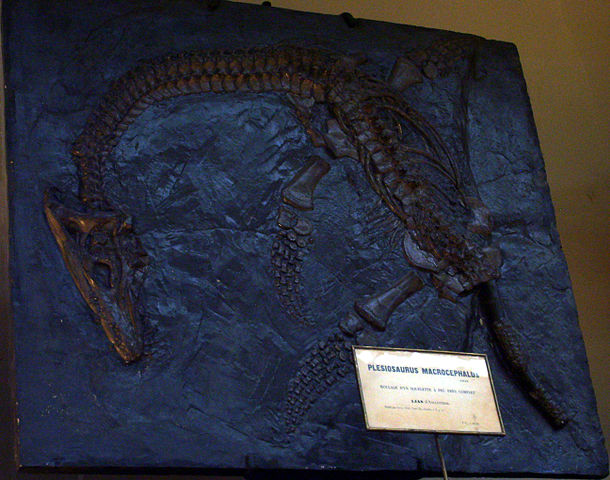Google's Doodle to celebrate Mary Anning's 215th birthday
Born on this day in 1799, Mary Anning and her family of fossil hunters made a significant contribution to scientific thinking about prehistoric life, which has largely been forgotten by the history books – but not by Google.
The stylised Google logo on Google’s homepage today illustrates Anning at work with her tools, brushing away dirt from the fossilised remains of an ancient giant beast.
Anning was born and lived in Lyme Regis, a coastal town in southwest England famous for its cliffs rich in fossils from the Jurassic period. Her father, Richard, was himself an occasional fossil collector and passed his skills on to his wife and children.
The Anning family sold fossils to make money after Richard died in 1810, and it was Mary that took charge of this family business.
She and her brother, Joseph, are credited with discovering the first specimen of Ichthyosaurus known to the scientific community of London – a discovery made even before Anning had reached her teens.
Forgotten discoveries
Anning went on to discover several other fine ichthyosaur skeletons, the first pterosaur skeleton located outside Germany and some important fish fossils, but her most significant discovery was the first plesiosaur, which saw her family recognised as legitimate and respected fossilists by the scientific community.

Portrait of Mary Anning with her dog Tray (Natural History Museum, London)
However, history has forgotten the Annings’ contribution to museum fossil collections, with the majority of their discoveries on display uncredited.
Anning’s social status and gender, as well as her lack of documented skills, have contributed to her obscurity. Though she is noted by the National History Museum in London as the greatest fossil hunter the world has ever known, very little is known about her life.
Scientific influence
Not only did Anning have a keen eye for discovery, her knowledge also contributed to palaeontology in its early days as a scientific discipline. Her observations played a key role in the discovery that coprolites were fossilised faeces and she also discovered that belemnite fossils contained fossilised ink sacs like those of modern cephalopods.
Despite all of this, Anning was not eligible to join the Geological Society of London for the mere fact that she was a woman.
Anning died from breast cancer on 9 March 1847. In 2010, the Royal Society included her in a list of the 10 British women who have most influenced the history of science.
After her death, Charles Dickens wrote in 1865, on observing an inscription under her memorial window which read ‘her usefulness in furthering the science of geology’, “It was not a science when she began to discover, and so helped to make it one.”

Cast of a ‘Plesiosaurus’ macrocephalus fossil discovered by Mary Anning (Muséum National d’Histoire Naturelle, Paris)
Women Invent Tomorrow is Silicon Republic’s campaign to champion the role of women in science, technology, engineering and maths. It has been running since March 2013, and is kindly supported by Accenture Ireland, Intel, the Irish Research Council, ESB, Twitter, CoderDojo and Science Foundation Ireland.